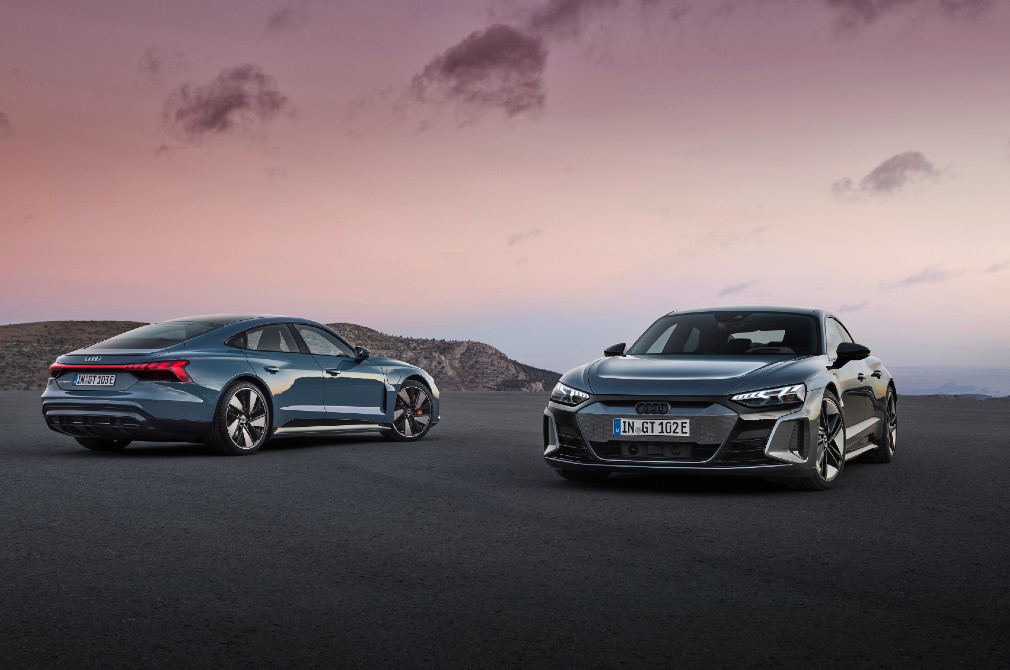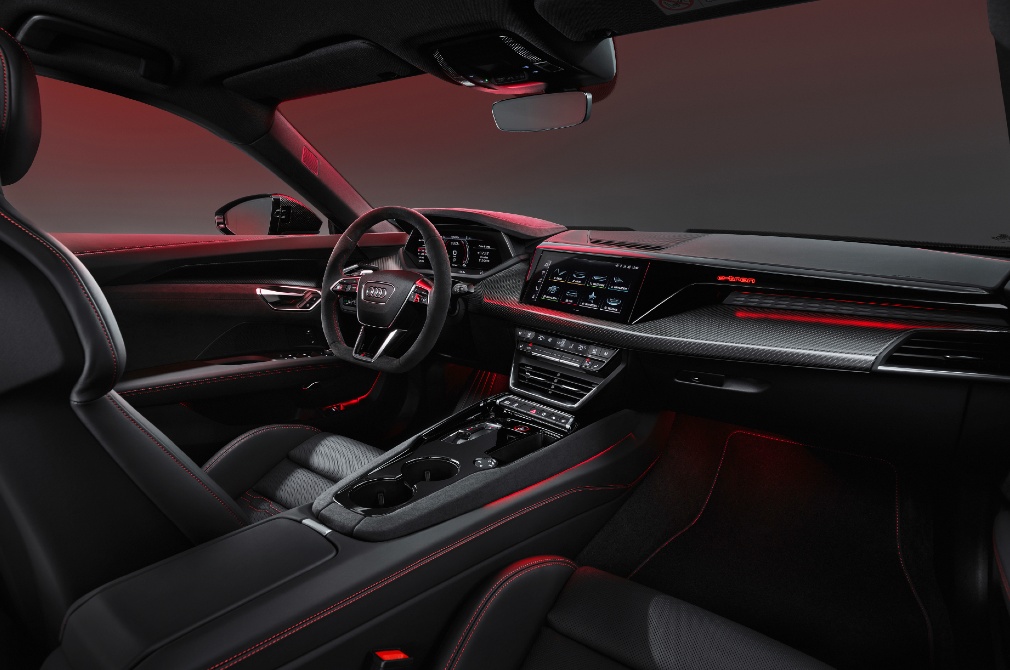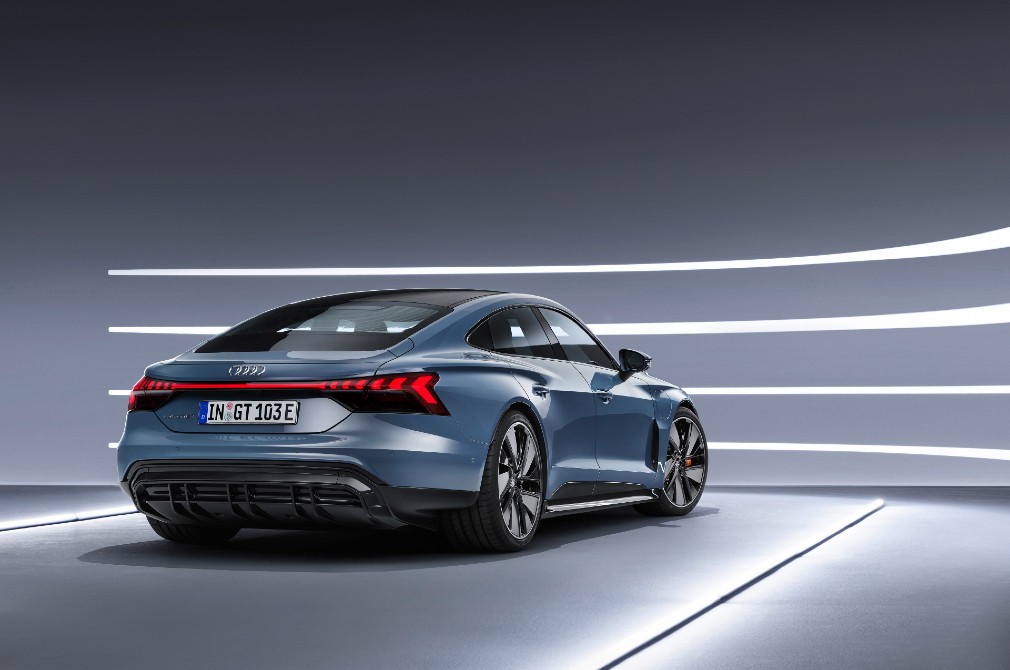Audi e-tron GT and RS e-tron will reach Singapore in Q3 2021

Audi is expanding its range of pure electric offerings with the addition of the e-tron GT quattro and RS e-tron. These grand tourers join the e-tron and e-tron Sportback, which are SUVs.

Both the e-tron GT and RS e-tron have an electric motor on each axle.
The Audi e-tron GT quattro offers 469hp (350kW) and 630Nm. Meanwhile, the RS e-tron, which is also the most powerful RS model to date, packs 590hp (440kW) and 830Nm.
The models are expected to arrive in Singapore in the third quarter of 2021.
The e-tron GT has been given futuristic styling, but its overall shape and various components are all designed to enhance the car’s aerodynamics.
Indeed, the e-tron GT has a drag coefficient of 0.24, despite its sizeable dimensions. The grand tourer is 4.99 metres long, 1.96 metres wide and 1.41 metres tall. That is similar in size to an A7 Sportback.
Audi says that the aerodynamic design alone is responsible for increasing the e-tron GT’s range by up to 30km.

The grand tourer features active aerodynamics, too. A controllable cool air inlet sits below each of the headlights, and behind the openings in the corners of the Singleframe grille.
These inlets remain closed as much as possible. But when needed, such as during hard driving, they are opened to help cool the front brakes.
Other enhancements include the flat underbody, rear diffuser and rear spoiler. The latter can extend to two different positions. In the Audi RS e-tron, the standard adaptive suspension also lowers the car at speed to further improve stability and reduce lift.
As a grand tourer, the Audi e-tron GT’s purpose is to blend performance with long-distance comfort.
The interior is designed to be sporty, with the driver and passenger sitting low and separated by a wide centre console. Sustainability also comes into play here, as the car comes with a leather-free design package.

The seats are upholstered in either artificial leather and Kaskade material, or artificial leather and Dinamica, which is similar to Alcantara. Both trims are made from recycled materials.
Indeed, every set of Kaskade material used to upholster the seats has 119 recycled plastic bottles. Even the carpets and floor mats are made from Econyl, which consists of 100 per cent recycled nylon fibres.
Both the Audi e-tron GT quattro and RS e-tron are equipped with 93kWh batteries, 85kWh of which is useable. The cars utilise an 800-volt electrical architecture, just like its “cousin”, the Porsche Taycan. Both carmakers belong to the Volkswagen Group.
Standard AC charging is 11kW, which lets a driver fully recharge a flat battery overnight. Using a DC charger, the e-tron and RS e-tron have a peak charging capacity of 270kW. At this level, charging from 5 per cent to 100 per cent (under ideal conditions) takes just 22.5 minutes.
Both the Audi e-tron GT quattro and RS e-tron have a motor on each axle. And just like the Porsche Taycan, they also feature a two-speed gearbox.

The e-tron GT quattro offers 469hp (350kW, 476PS) and 630Nm. In boost mode, which lasts approximately 2.5 seconds, these figures rise to 523hp (390kW, 530PS) and 640Nm.
With boost mode, zero to 100km/h is accomplished in 4.1 seconds, and the car has a top speed of 245km/h.
The RS e-tron, on the other hand, delivers 590hp (440kW, 598PS) and 830Nm. In boost mode, power rises to 637hp (475kW, 646PS). In this mode, the RS e-tron reaches 100km/h in 3.3 seconds, and tops out at 250km/h.
These performance figures make the RS e-tron Audi’s quickest and most powerful RS model to date.
Naturally, both e-tron models are equipped with the brand’s quattro all-wheel-drive. It regulates the drive torque to both axles continuously and fully variably.
Like the e-tron SUV, the Audi e-tron GT quattro and RS e-tron have predictive efficiency assist. It regulates the energy recuperation and coasting functions based on data from the on-board sensors and navigation route.

Both the e-tron GT quattro and RS e-tron are expected to reach Singapore in the third quarter of 2021.
Prices for Singapore are still unavailable at this time. In Europe, the e-tron GT quattro starts from 99,800 euros, while the RS e-tron starts from 138,000 euros (S$221,000).
Battery: 93kWh gross, 85kWh net
Max power: 469hp (350kW, 476PS)
Max torque: 630Nm
Boost mode: 523hp and 640Nm
Gearbox: Two-speed
0-100KM/H 4.1 seconds (boost mode)
Top speed: 245km/h
Consumption: 19.9kWh to 21.6kWh per 100km (WLTP combined)
Battery: 93kWh gross, 85kWh net
Max power: 590hp (440kW, 598PS)
Max torque: 830Nm
Boost mode: 637hp
Gearbox: Two-speed
0-100KM/H 3.3 seconds (boost mode)
Top speed: 250km/h (governed)
Consumption: 20.6kWh to 22.5kWh per 100km (WLTP combined)
This article was first published in Torque.